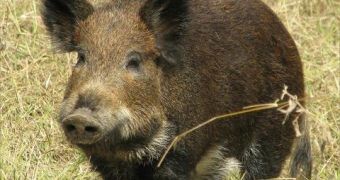A new study conducted at the University of Florida investigates why it is that, in spite of continuous efforts to bring down their population, feral hogs still seem to be thriving in Florida's Treasure Coast, where they constantly destroy agricultural land and forest ecosystems.
After speaking to as much as 90 land managers, the environmental scientists in charge of finding a solution to this ongoing problem reached the following conclusion:
About half of the people they interviewed had little success when it came to removing feral hogs from their lands, whereas a quarter of them argued that all their efforts to drive the animals away eventually proved to be futile.
The official website for the University of Florida informs us that Ken Gioeli from the St. Lucie County recently explained how, “Feral hogs are definitely one of our more noticeable invasive animal issues on the Treasure Coast. People have been struggling to deal with the populations and we want to offer them better options.”
However, it seems that feral hogs are well equipped and trained to resist human efforts of getting rid of them. Thus, they tend to spend most of their time in areas which are relatively hard to access, let alone install various types of traps.
As Ken Gioeli puts it, “The traps are very large and it can be difficult to transport them to the site. There are also some types of terrain where you can’t use a corral trap.”
Moreover, “If they’ve seen a trap, they remember it,” which means that the animals will purposely avoid the areas they consider to be dangerous for their well-being based on past experiences.
For the time being, researchers are conducting an online survey to determine how it is exactly that feral hogs succeed in bypassing most efforts directed at tracking them down and preventing them from causing damage to the natural ecosystems they roam.
Given the fact that this animal species is not native to this part of the world, but was only brought here in the 16th century, we can only speculate that the problems local communities now have to face because of them come as a direct result of humans' interfering with the biodiversity map.

 14 DAY TRIAL //
14 DAY TRIAL //